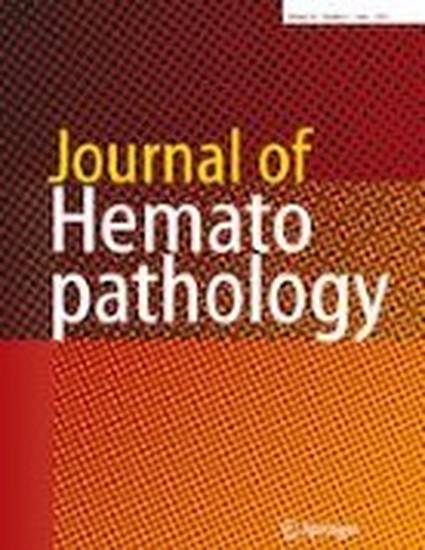
Article
Two morphologically and immunophenotypically distinct cell populations within a composite lymphoma arise from a common precursor
Journal of Hematopathology
(2011)
Abstract
The term composite lymphoma defines a lymphoma consisting of two or more morphologically and immunophenotypically distinct lymphomas within the same lymph node or other organ. Recently, several molecular studies have shown that different components within a composite lymphoma may arise from a common clone. In contrast, there are also reports of biclonal cases of composite lymphoma. For this study, we identified five cases of composite lymphoma and analyzed them by various techniques to determine the clonality of the components. In four cases (1–4), a laser capture microdissection technique was used to collect separately each of the component lymphoma types. These were analyzed by polymerase chain reaction (PCR) to assess the rearrangement of the J segment of the immunoglobulin heavy chain gene (JH). In all cases, gel electrophoresis demonstrated that the JH amplicons from each component were identical in size. DNA sequencing of the amplified JH region was successful in three of these four cases (1, 3, and 4), and the sequences of the JH regions of both components of each composite lymphoma were identical. Three of the composite lymphomas (2, 4, and 5) were also tested by a related approach: PCR of the variable region of the immunoglobulin heavy chain gene using primers that bind to framework regions 1, 2, and 3, followed by capillary electrophoresis. The PCR amplicons from tissue containing a mixture of both components of the composite lymphomas gave one major peak in each of the three electropherograms for each lymphoma, indicating that only one clone of rearranged immunoglobulin was present despite the two distinct cellular morphologies. Additionally, fluorescence in situ hybridization in case one showed identical results in the two different cell types. Our results suggest that the two different components within each composite lymphoma represent a morphologically and immunophenotypically divergent differentiation of a common clone.
Disciplines
Publication Date
July 8, 2011
DOI
10.1007/s12308-011-0101-0
Citation Information
Zhang, H., Salimnia, H., Bentley, G. et al. Two morphologically and immunophenotypically distinct cell populations within a composite lymphoma arise from a common precursor. J Hematopathol 4, 165 (2011). https://doi.org/10.1007/s12308-011-0101-0
